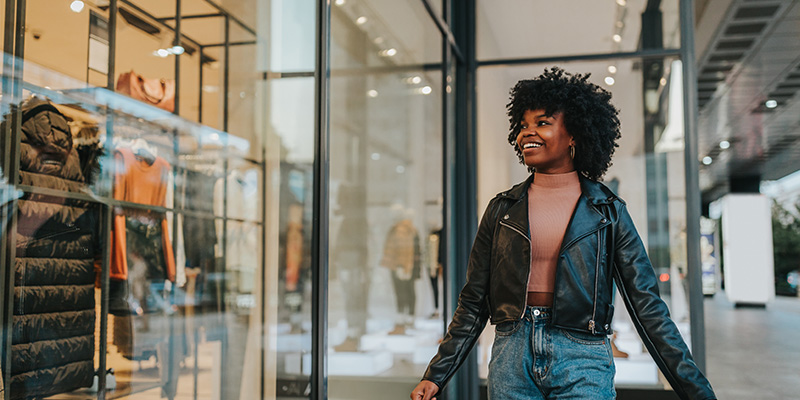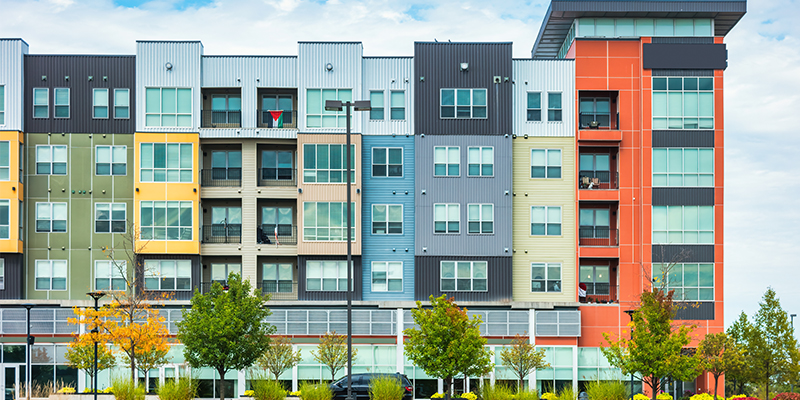By Christina Faley, WELL AP, IIDA
Despite the year-over-year growth of the retail sector for the period of 2022-2024, brick-and-mortar investors, developers and landlords must navigate shifting consumer behaviors, the continued rise of e-commerce as well as waves of chain store closures. This complex set of continuously evolving challenges sparks questions about where to invest and the need for a more strategic, experience-driven approach to physical retail spaces.
One of the most notable shifts is the changing expectations of younger consumers, particularly Generation Z. While this generation values in-person retail experiences more than some of their predecessors, their expectations are significantly higher. They reject many of the trends that have dominated the industry in recent years, including fast fashion; generic, cookie-cutter designs; and superficial photo ops. Instead, they demand a more authentic expression that aligns with their personal values and identity. Having grown up with unparalleled access to digital content, their worldview and preferences are highly individualized. Unlike previous generations, who shared common cultural touchpoints through traditional TV, music, and shared experiences and were more accepting of generic environments, Gen Z wants brands – and by extension, retail spaces – that speak to them directly.
Retail brands can successfully tap into Gen Z’s purchasing power by understanding their need to seek meaningful connections, authenticity and purpose-driven experiences. These qualities must be embedded into the very fabric of a store’s design and location strategy. By focusing on these elements, brands can appeal to a diverse cross-generational group by being true to themselves and what they believe in.
Omnichannel Presence and Authentic Brand Storytelling
Brands develop distinct online identities to communicate clearly and deliberately the value they bring to their niche of the market. Whether through influencer partnerships, immersive digital campaigns or causal interactions with a brand’s touchpoints, customers and followers buy into a brand’s storytelling and develop an expectation of how this should translate into the physical environment. The transition from online to offline touchpoints must be cohesive to preserve that connection. Strategies to achieve this should be tailored to the brand, shifting away from broad retail trends and instead focusing on holistic, experience-driven spaces that align with a company’s core values.
For many direct-to-consumer brands, identifying the right location for a brick-and-mortar presence can be a challenge. Traditionally, the equation was simple: go where the customers are. Today, sales and shipping data can offer insights into regional and geographic demand to help guide the process, but narrowing down where exactly to locate a new store now requires a little more research. Shopping malls don’t provide the same automatic draw they once did, and many emerging brands may not have the budget for a high-profile flagship location on Fifth Avenue or Rodeo Drive. Moreover, environmentally conscious retailers may avoid sprawling plazas that lack sustainability initiatives and green space.
To maintain alignment with their customers, brands are seeking locations that feel more authentic to their identity – areas where their customers feel like they belong and where like-minded retailers create a complementary ecosystem. In many cases, customers are willing to travel farther to shop if it means the location is part of the broader story. The environments that will appeal to them can be curated with the right leasing strategies for more intentional, market-relevant retail corridors and mixed-use developments that foster connections.
Not Just Where, but How Much, and How it’s Organized
Changes in consumer habits and expectations have also impacted store footprints. Many emerging brands embraced the ”store-as-a-showroom” model to introduce their products without the need to hold large amounts of product on site, but Gen Z values immediacy – leaving the store with a purchase in-hand is part of the experience. The last thing a shopper wants to hear, especially if they have made a conscious effort to visit a store location is, ”Oh, we don’t have these items in stock, but we can order them for you.“ Rewarding the conscious effort to shop in-person is a crucial differentiator, making on-site inventory storage an essential consideration for retailers and landlords alike.
Store design and product display should reflect the same authenticity that defines a brand’s online presence. A company promoting sustainability and durability with a” buy it for life” message should avoid a front-of-house area packed with product in favor of a minimalist, curated space. A specialty retailer offering linens, in a variety of colors and textures, will need ample space to showcase the full collection for customers to touch and feel.
In both cases, the need for inventory storage has real estate implications that cannot be overlooked. For smaller footprints, landlords can support these needs by offering flexible storage solutions, such as on-site swing storage or leasing adjacent vacancies in modular ways that allow retailers to scale their spaces efficiently.
Getting Creative with How it’s Activated
Gen Z’s preference for in-person retail isn’t enough on its own for many brands to justify a brick-and-mortar presence. Especially for those aiming for multigenerational appeal, shopping in-store must add a new layer to the brand experience.
Limited edition collections, pop-ups and collaborations, for instance, help create a sense of exclusivity that can drive foot traffic. Product personalization moments – such as embroidery services for apparel, customizable sneaker laces or signature scents – allow customers to become part of the brand’s story, strengthening their emotional connection through physical space. These moments also serve as organic social media backdrops, avoiding the artificial feel of staged photo-ops.
Retailers situated in high-foot-traffic, walkable environments or clustered with like-minded brands can further enhance the experience by integrating “third-place” elements – inviting social spaces that extend beyond traditional retail. Incorporating lounge seating, coffee bars and cocktail/mocktail bars into a store’s footprint invites people to linger longer, meet friends and relax – fostering a brand experience that transcends the transactional.
Even for smaller retailers, leaning into the natural differentiation between zones in the layout can reveal pockets to layer in elements that enhance the retail environment.
Landlords and developers play a pivotal role in supporting the evolution of retail spaces. By activating outdoor connection points between storefronts or programming ancillary spaces to celebrate the stories these brands share with their clientele, they can help inspire the ”third-place” experience. Bringing together and working in partnership with like-minded brands to curate intentional, mixed-use destinations, bridges the gap in what consumers – both Gen Z and beyond – are craving but can’t find online. Success in today’s retail landscape hinges on the ability to holistically and authentically engage people through and around space, unlocking greater economic opportunity and incentive through shared storytelling.








